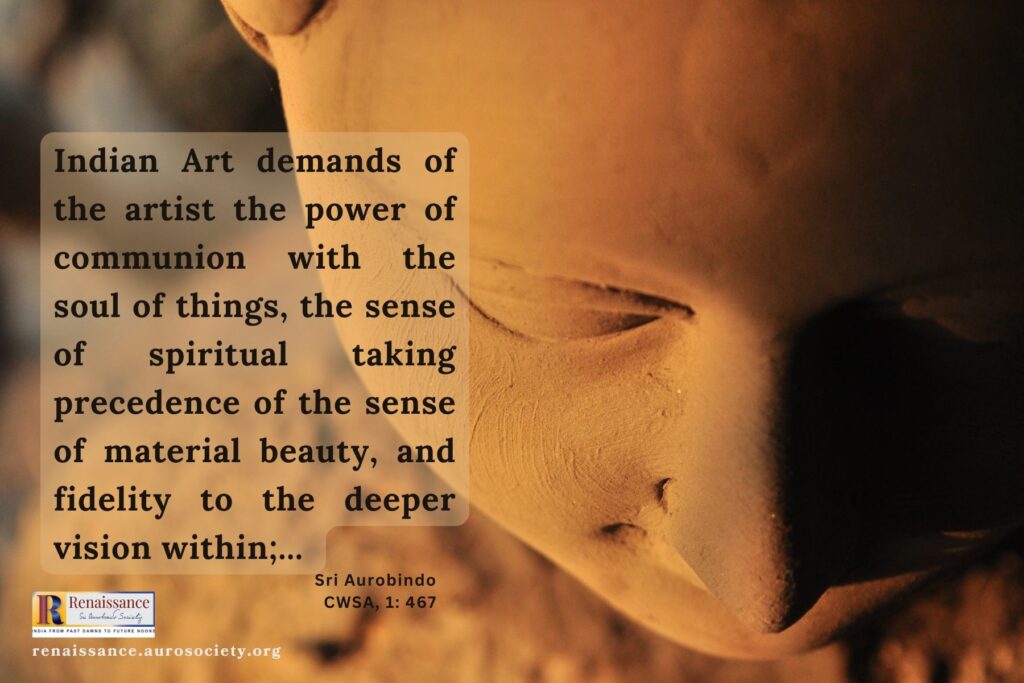Release of Renaissance, Volume V, Issue 11-12
Date: November 21, 2024
Excerpt from Editorial by Beloo Mehra
An ability to ‘see’ is the key difference between a true artist and a non-artist or a mere craftsman. We are not talking here about the specific angle or perspective from which an artist sees the outer form of the object which he or she is expected to draw, paint or carve. The concern is with the ‘inner seeing’ or the subtle seeing of the truth that hides within the object or behind its outer form and name which the artist is supposed to grasp and express.
This ability to ‘see’, this drishti, may be a gift of the Nature, but it still requires cultivation and refinement through a rigorous training and discipline. This discipline also includes the necessary inner purification and quietening so that the opening to the higher source of inspiration can be strengthened and kept turned upward.
Speaking of the form of the Vedic hymns, Sri Aurobindo remarks that the finished metrical form, exhibiting great subtlety and richness of poetic style, reflects a supreme and conscious Art. The Vedic tradition speaks of the Rishis not as the individual ‘composers’ of these hymns, but as the ‘seers’ and ‘hearers’ of the spiritual truth which find an expression in the hymns rising out of their very soul.
The Vedic Rishi was, however, not concerned about the hymn as a work of poetry. Rather, the art of expression to him was mostly a means, not an aim. The principal preoccupation of the Rishi was “strenuously practical, almost utilitarian, in the highest sense of utility”, says Sri Aurobindo.
The hymn was to the Rishi who composed it a means of spiritual progress for himself and for others. It rose out of his soul, it became a power of his mind, it was the vehicle of his self-expression in some important or even critical moment of his life’s inner history. It helped him to express the god in him…~ CWSA, Vol. 15, pp. 11-12
From a spiritual view, true art is an expression of the Divine in life and through life. This necessitates that the artist — the painter, the musician, the poet, the sculptor — must first have a unique, personal contact with the Divine. And then express this contact through the art form the artist has mastered — in a style and form unique to him. This makes the art ‘individualistic’ but not rooted in the ego. This makes the art ‘impersonal yet personal’ in the true sense of both the terms.
The above discussion presents some of the key ideas explored in more detail in the November 2024 issue of Renaissance, which focuses on two inter-related themes: “The Way of the Indian Artist” and “Art as Yoga.” Given the great importance of these topics, we have made this a double issue with 18 offerings. (A bonus offering will be released on Siddhi Day, November 24).

